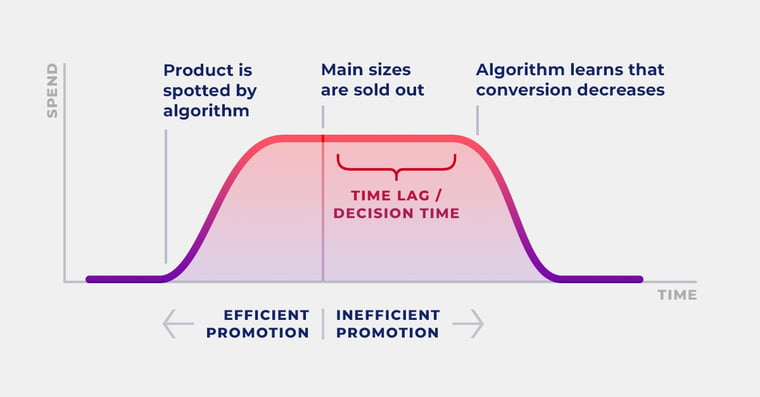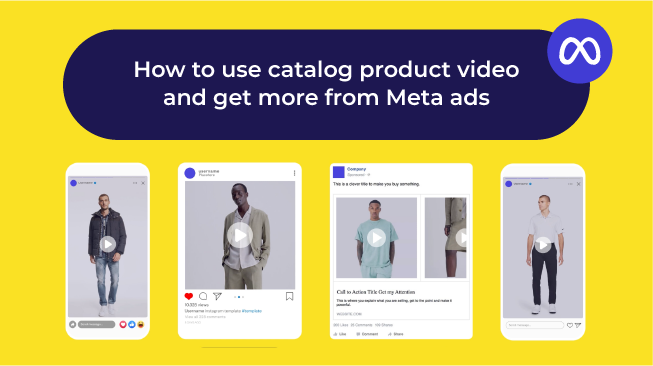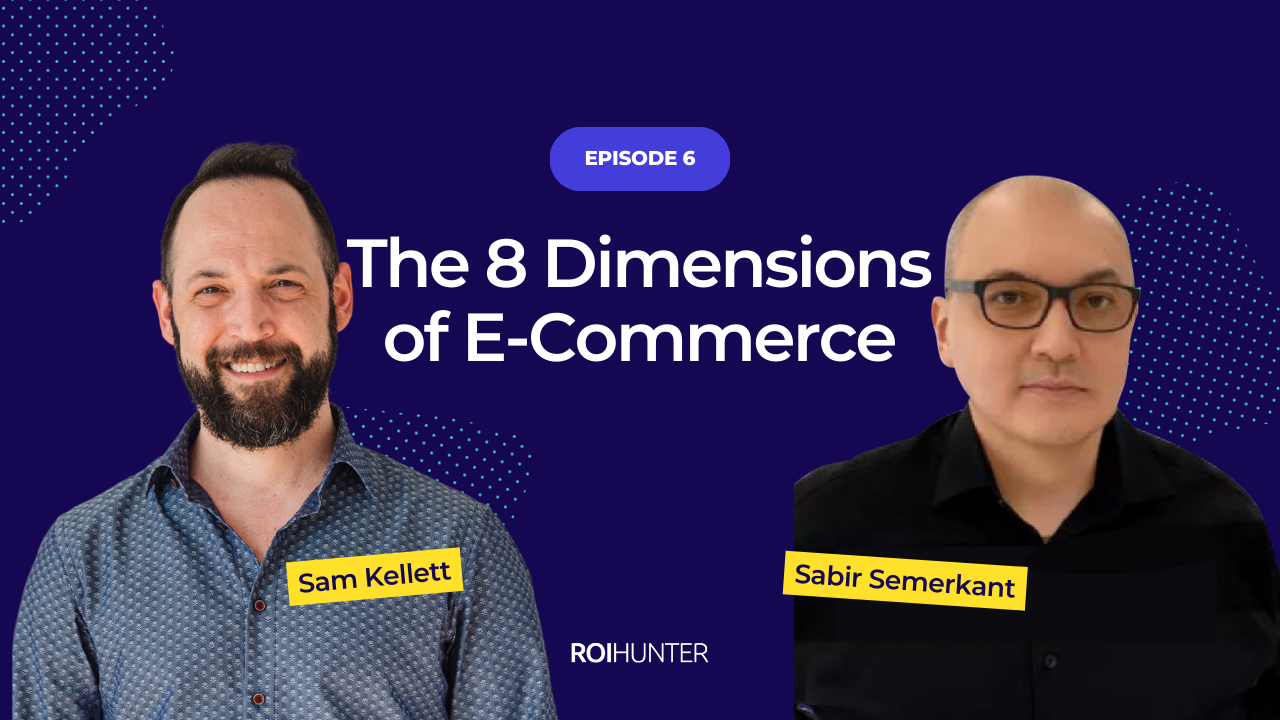There are many ways dynamic ads can increase your profitability, but today we’re going to talk about how retailers can both become more profitable and protect customer loyalty at the same time. How? By excluding low-stock and out-of-stock products from dynamic promotion. To make this possible, I first want to introduce you to a new metric: Stock Out Score.
Stock Out Score (SOS). What is it, and why is it crucial to know?

Picture this: you’re shopping online for a pair of pants, and you finally find the ones you want (my God.. this pair has the PERFECT pocket size. And they're orange!). You click to buy, only to discover that they’re actually sold out of your size. And sold out of most colors. But there’s one variant left–a gray pair that definitely won't fit you–and that’s why the ad is still showing.
Great. Now if you were this customer, you’d be a bit annoyed, right? Not only has your time been wasted, but your expectations have been inflated, then crushed.
If you were the retailer with the one big pair of pants, that’s even worse! You’ve alienated this customer, possibly lost their business for life, and on top of that, you actually paid to make it happen.
ROI Hunter set out to solve the problem of promoting out-of-stock items by integrating stock-level data with a retailer’s product inventory. With this data connected, retailers can know if an item in their product set is in danger of running out. In order to measure the effect, the idea of a Stock Out Score (SOS) was developed.
For an example, let’s go back to our pair of pants. Say your pants have 10 different variants (differences in waist, leg length, etc). If you have 6 of those 10 variants in stock, the SOS for the pants is 60%. If you have 3 of those 10 variants in stock, the SOS is 30%. Simple!
Once all your products are assigned an SOS you can create automatic rules to prevent them from being promoted if too many variants are unavailable.
Example:
Rule: Only include products with SOS > 33%
A rule like this ensures that only products with at least ⅔ of their variants in stock will be promoted.
What's so important about preventing promotion of out-of-stock products?
Cutting costs
While we’re still collecting data, we’ve noticed with our clients that an average of 5% - 20% of dynamic ad-spend is used promoting products that have out-of-stock variants. Unless you can identify and exclude these products, you’re wasting 5 - 20% of your dynamic budget making your own customers upset!
Customer Loyalty
Online retailers lose about $22 Billion every year due to missed sales from out-of-stock products. A quarter of customers will actually switch stores to find the product they want if you don’t have it, which can lead to disastrous results for your bounce rate.
When your dynamic ads promote items with few variants available, you risk losing the customers who click them to a competitor. This is an issue when prospecting, sure, but it’s even worse when you’re running campaigns to your existing customer base, and frustrating them with promotions for items they can’t have.
How to avoid promoting out-of-stock products by calculating your SOS
An automated inventory management system can help you keep track of all the variants you have for each item, but it doesn’t calculate SOS automatically. ROI Hunter clients are able to use our Product Performance Management (PPM) platform, which integrates product-level performance data from across their channels.
Users can connect their stock-level data to the PPM platform using a custom source, ensuring that their inventory information stays up-to-date. With the PPM platform handling the SOS, you can ensure your campaigns will never promote out-of-stock products again.
Real-world usage
Stock Out Score is a new metric, but we’ve seen great success from clients who have addressed the low-stock variant issue, including major retailers like Max Fashion.
Max Fashion
Max Fashion is the largest fashion brand in the Middle East, North Africa, India, and SE Asia. They began to calculate how they were being affected by out-of-stock promotions, and realised it was leading to high bounce rates, wasted ad impressions, and lower conversion rates overall.
They provided ROI Hunter with their stock-level size data, and ROI Hunter helped them create a filter to find all the products in their catalogue with at least 70% of their size variants in stock. After applying this filter to their existing campaigns, Max Fashion was able to exclude the low-stock items that didn’t match, and they started to see incredible results.

Final Thoughts
By tracking the SOS metric, and using it to apply automatic exclusion rules, you can save budget and avoid upsetting customers.
Stock Out Score is the latest tool in ROI Hunter’s arsenal, but it’s just one of the ways we work with product-level performance data. If you’re curious about other ways to improve and enhance your dynamic promotions, download our e-book, Enhanced Dynamic Ads: Build, Optimise, and Prospect Better Than Ever Before.



.png)
